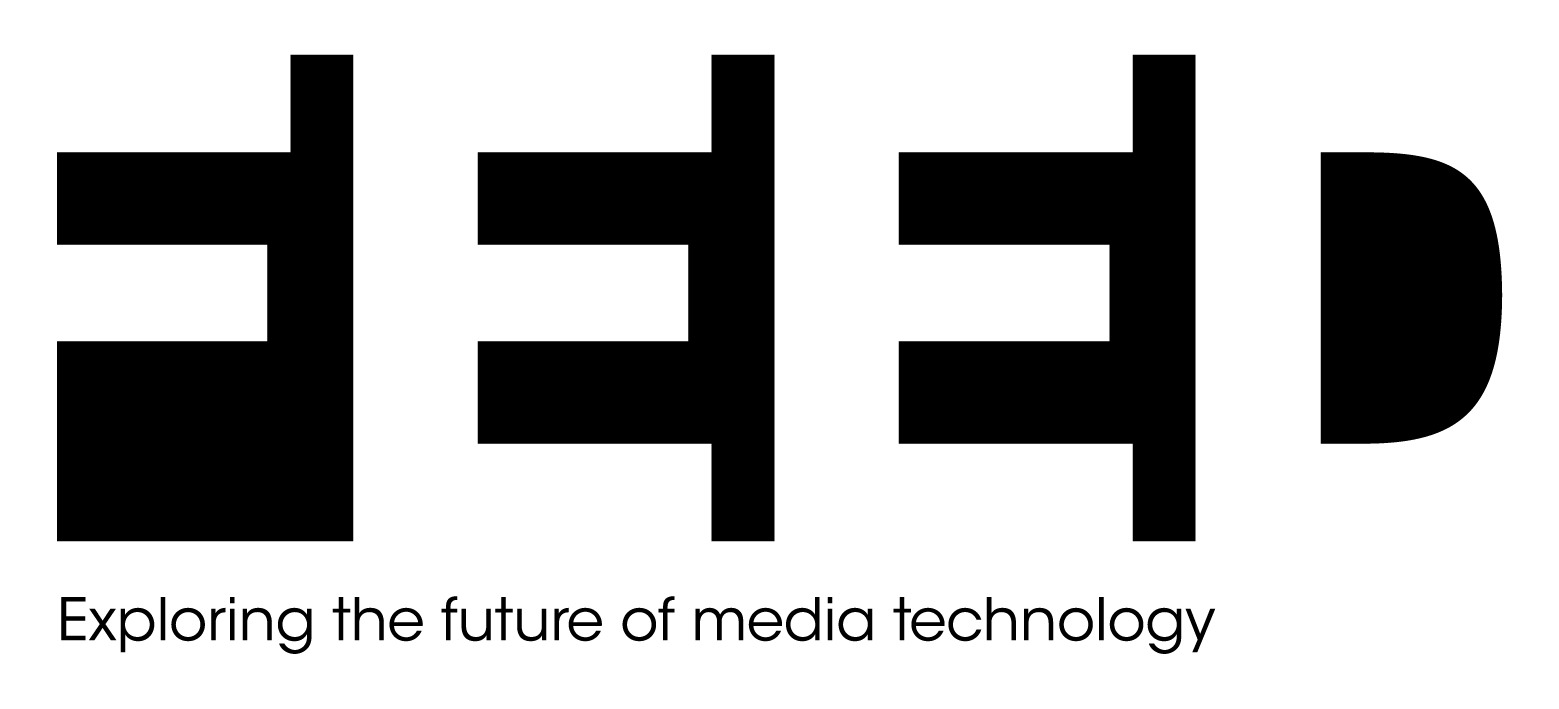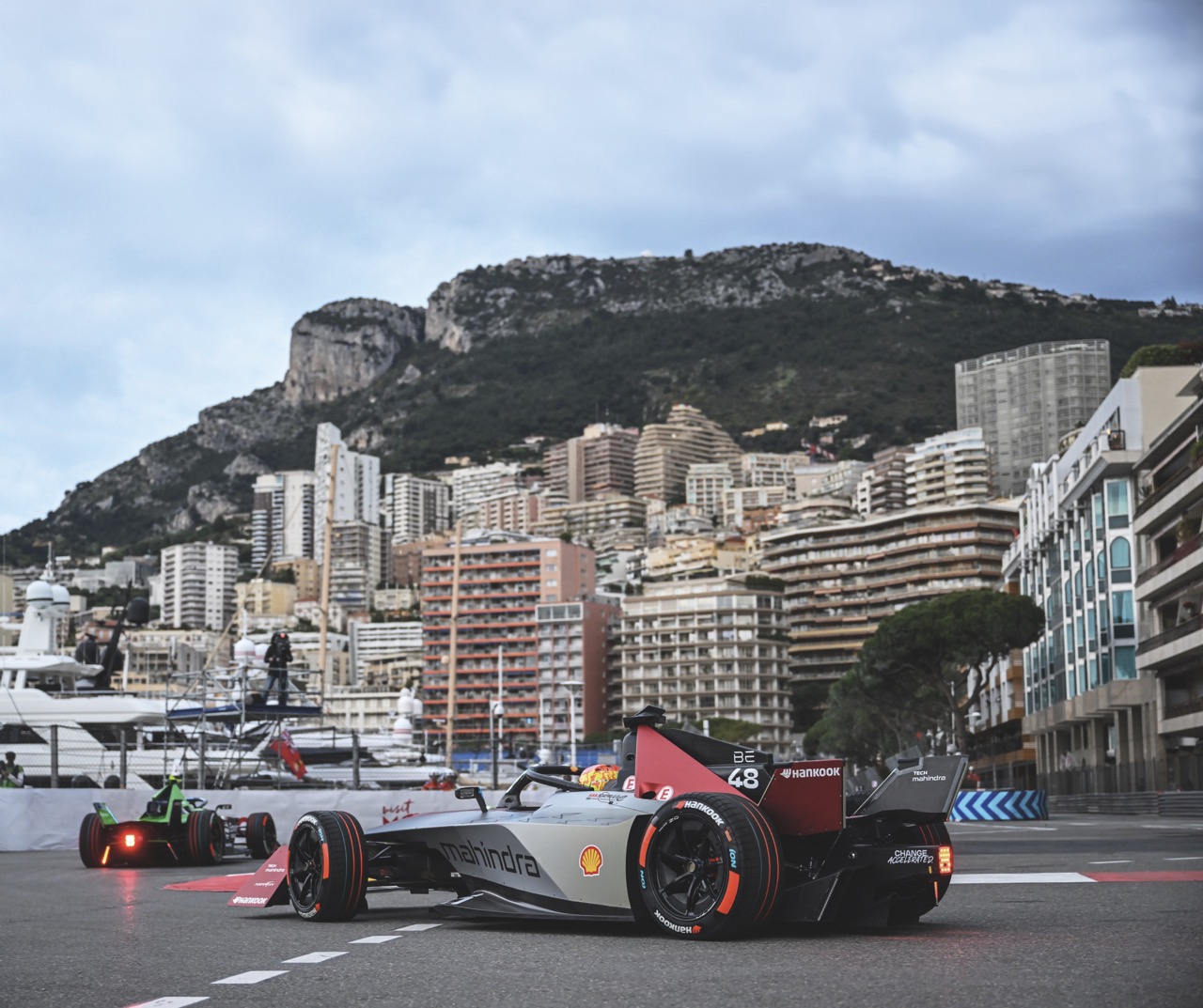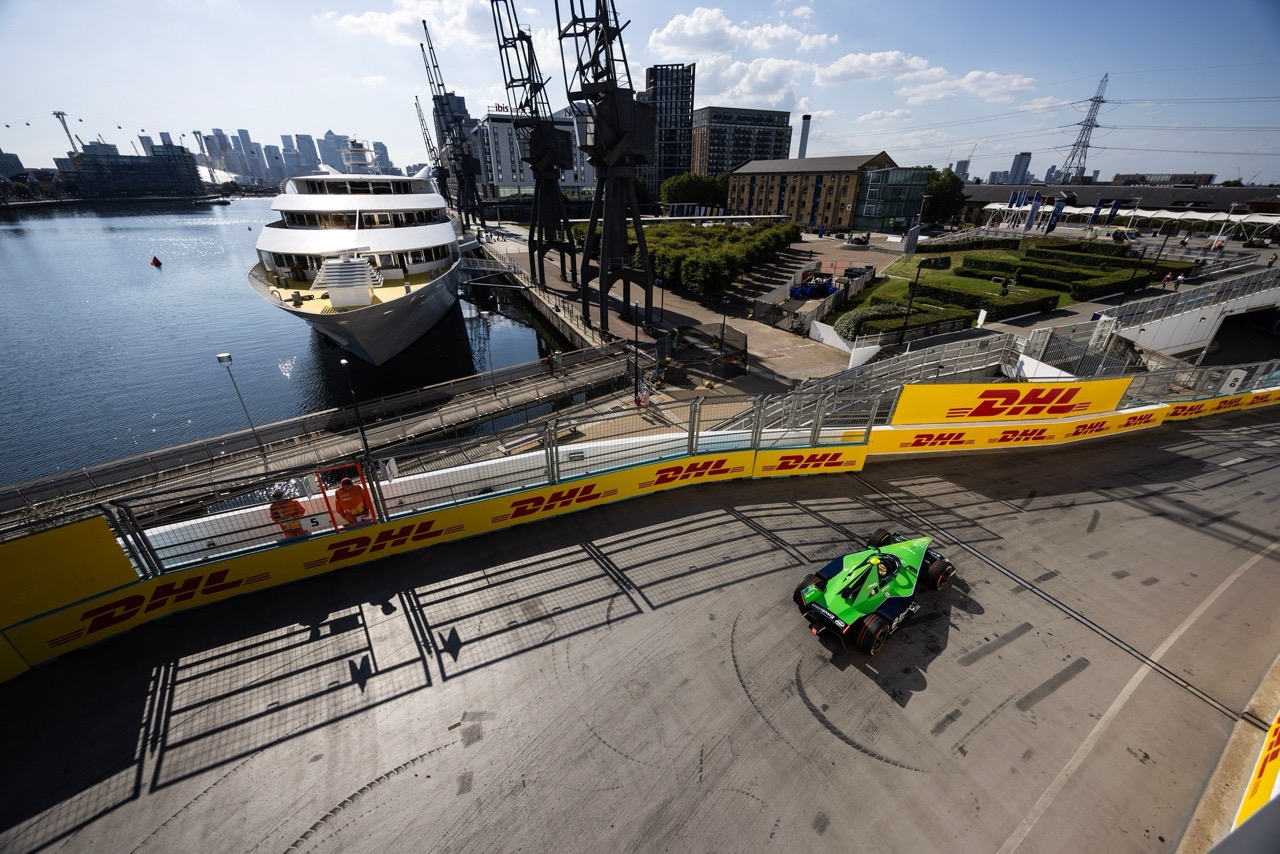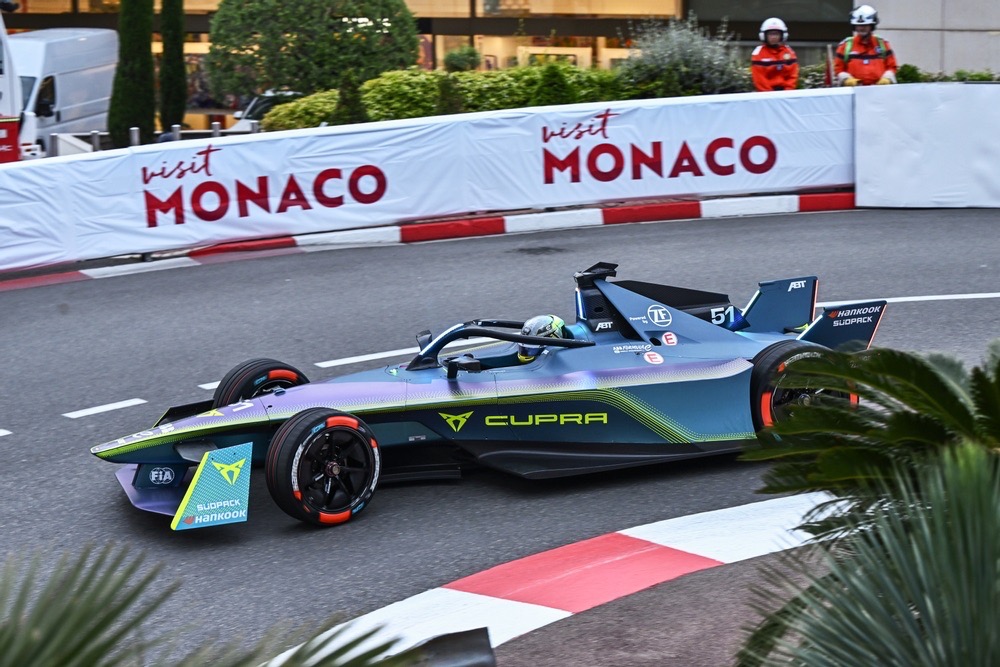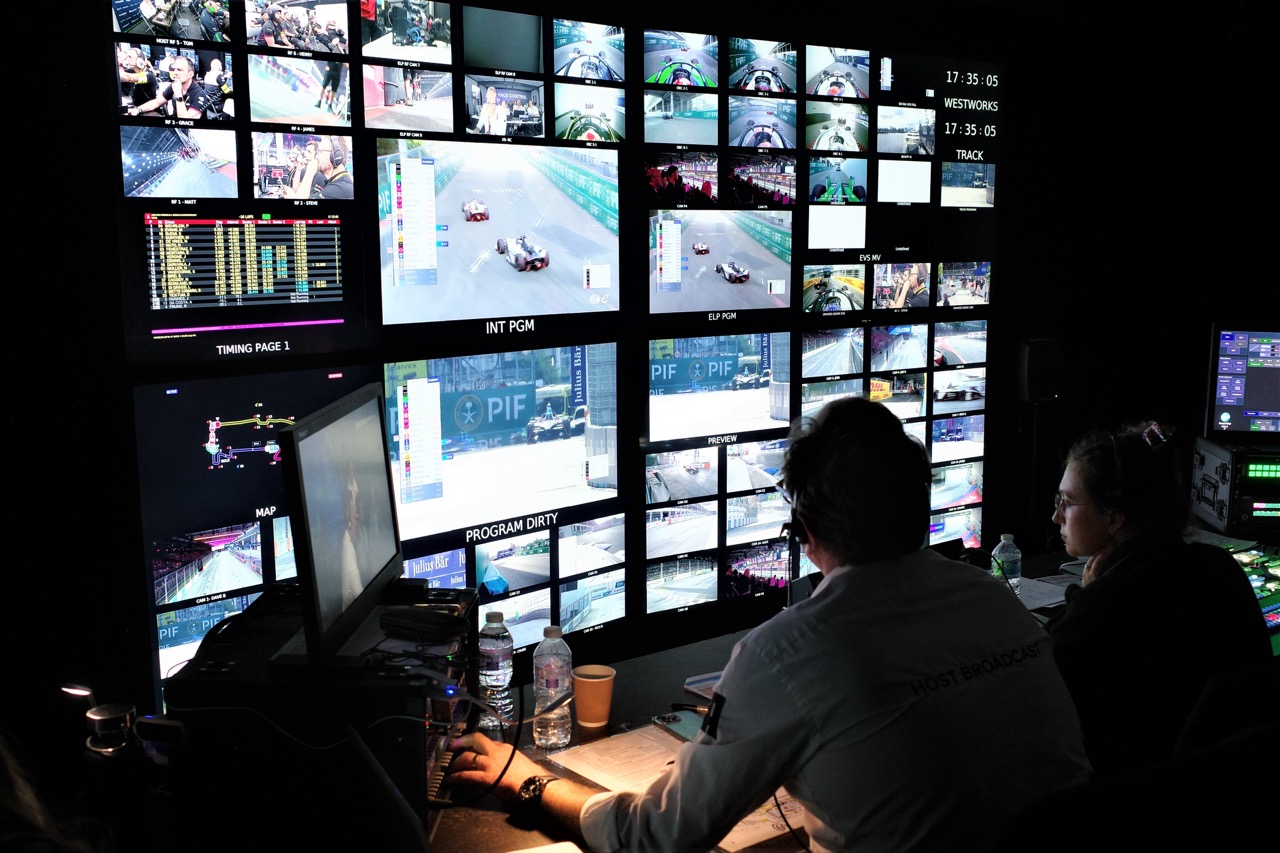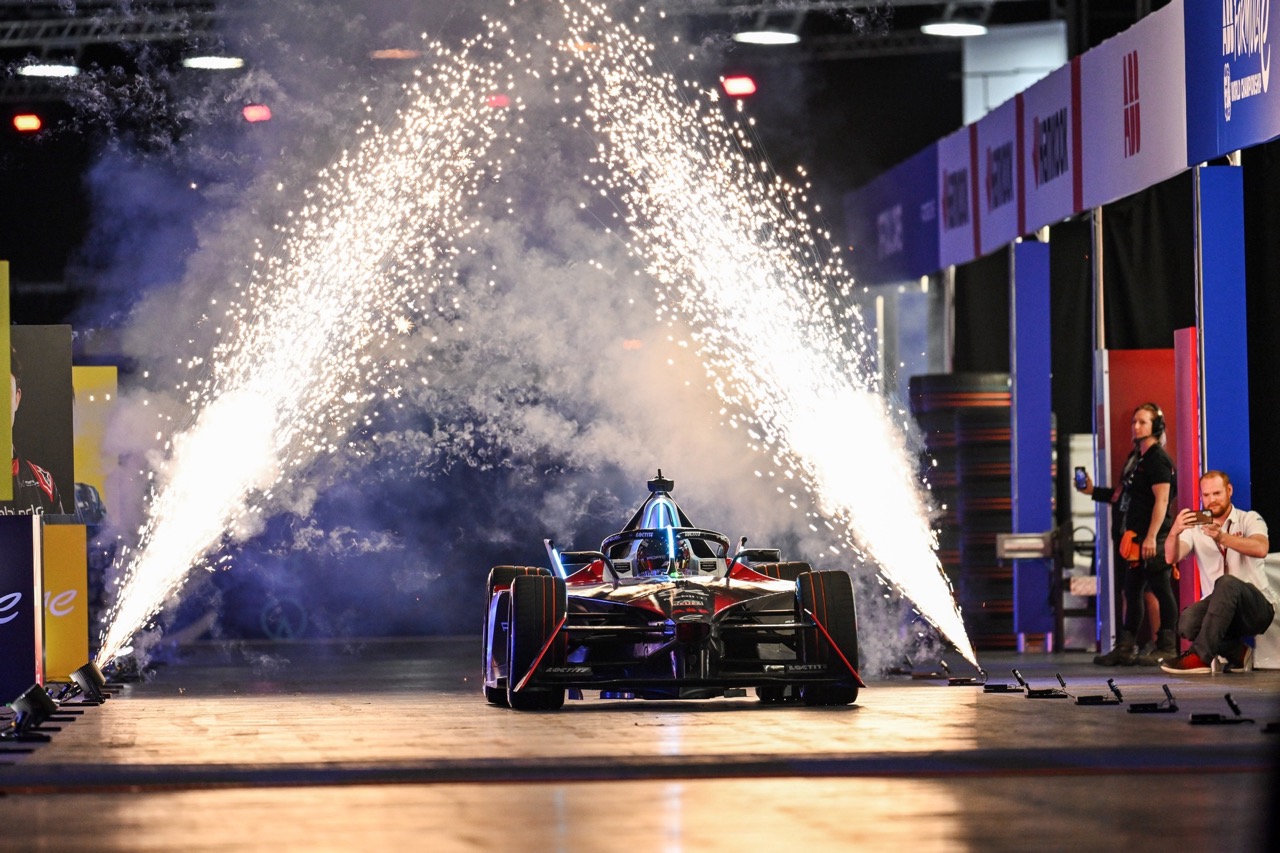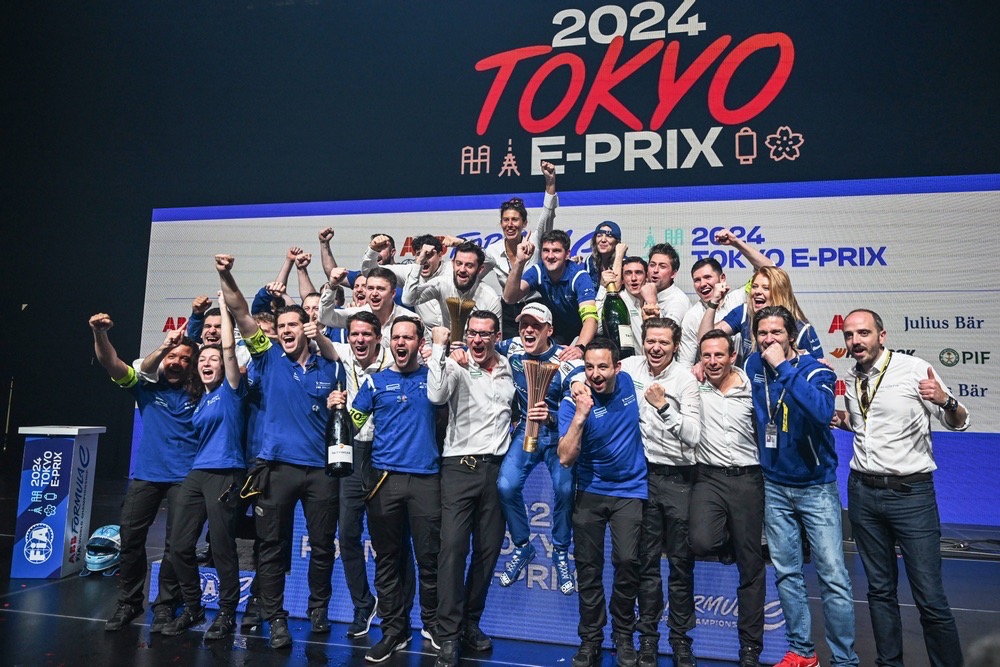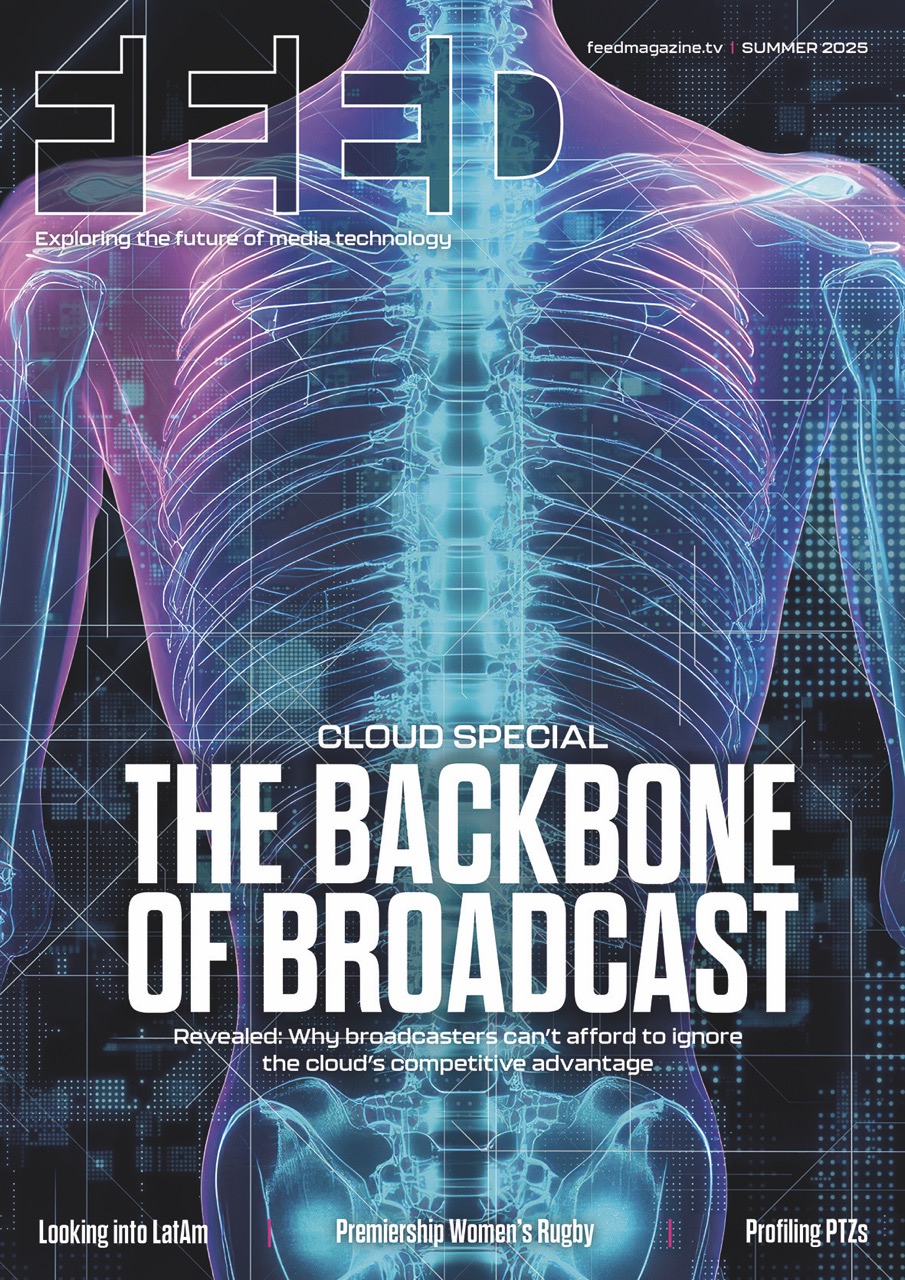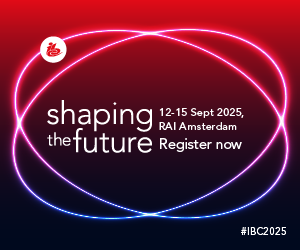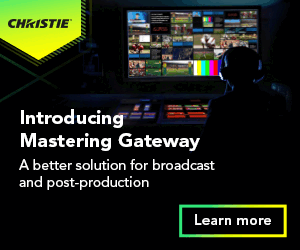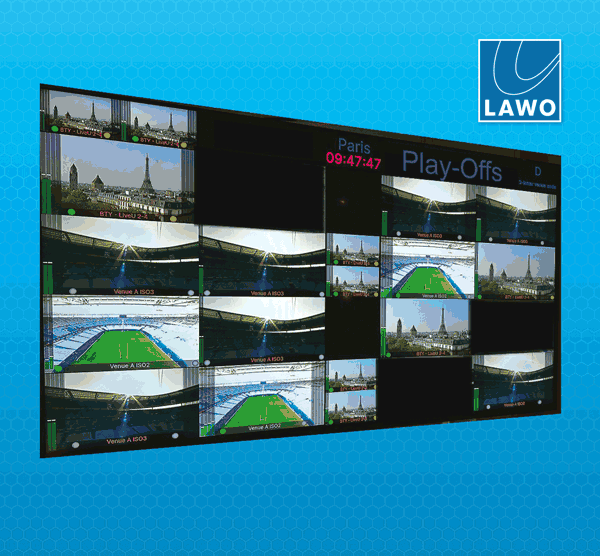Broadcast BTS: Formula E
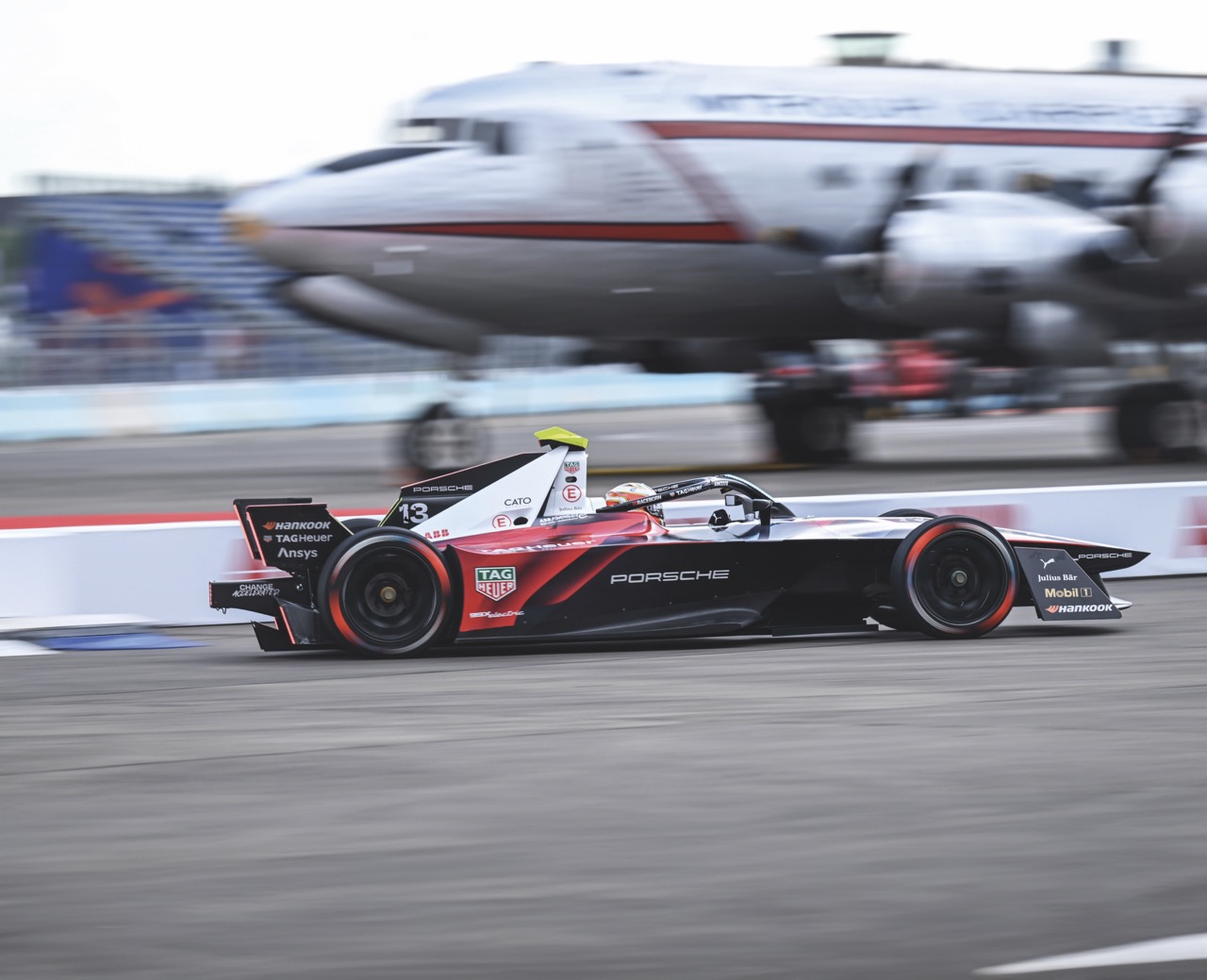
Posted on Mar 7, 2025 by FEED Staff
Pedal to the metal
As Formula E celebrates a decade of high-voltage action, FEED meets its founders to reflect on the journey and tech behind the production powerhouse it is today
Words Thea Morrison | Images Simon Bagnall
In a Parisian restaurant on 3 March 2011, the FIA president Jean Todt and Spanish businessman – now Formula E chairman – Alejandro Agag met for dinner. They jotted down an idea on the back of a napkin at that meal, which would see the first Formula E racing cars hit the track in the Beijing Olympic Park just three years later.
From its exciting start in 2014, FIA Formula E – the world’s first all-electric international single-seater championship – now has 12 teams and 24 drivers on the grid. Speaking from Formula E’s first official pre-season testing session in Madrid on 5 November, Aurora Media Worldwide’s Mike Scott and Westbury Gillett, executive producer and director for Formula E, discuss how they have seen the series grow since its inception.
Aurora Media Worldwide has been the host broadcast production partner since the beginnings of the series. On how that original plan for the broadcast has evolved, Scott comments: “To begin with, we obviously had everybody on location. No one would even mention remote production. That didn’t exist at the time – so it was all very much on site. I think we had a crew of about 45 people at the first race.
“Year by year, as the championship grew, the TV production grew alongside it. So by the time we got to last year, there must have been about 100 people travelling, then we have a lot more people back at base. We managed to get to the point where remote technology could allow us to move into making it a split production.”
That move to remote was one of the biggest steps in the broadcast’s evolution, Scott says. For Season 9 in 2023, Formula E took the host broadcast technical facilities of all its content in-house as a managed contract. The new set-up is based on a centralised remote production model with a small footprint on location, with around 50 previously on-site staff working from the UK at the Westworks Production Centre in London, established by EMG and Gravity Media, including staff responsible for tracking, graphics and audio.
Additionally, connectivity for the broadcast is over public internet rather than dark fibre, facilitated by Tata Communications. This involves sending nearly 100 feeds back to Westworks over a 2GB internet connection, a concept initiated by Formula E and developed for it by Tata, resulting in glass-to-glass latency of just over half a second.
Watch Aurora Media’s work on the racing broadcasts here
Fast growth
Gillett adds that, even before the first series began, the production was forced to grow: “The original concept was that all crew – the camera operator for example – would be on radio talkback without programme tallies, tally lights or returns. That was to do an RF coverage production with nothing cabled. It was really small and lightweight.
“But as momentum built leading into that first year, it was like, ‘Oh OK, this Formula E is going to be way bigger than we all anticipated!’ That’s when we convinced Alejandro Agag to actually invest more money and go for a fully fledged live outside broadcast. So we stepped into the first production with that and flyaway pods. I remember, at the second race we went to, we had three extra crew members – the pilot, the helicopter and the camera crew engineer – but it was still a really small crew, and at the beginning everyone was getting stuck in, pulling the cables.”
As for how the production looks today, Scott says it’s very much a remote production now, with a significant number of crew based in London and a footprint of around 100 people on location as the circus makes its way around the world.
Scott notes: “Formula E is a very specialist sport service production, so it’s not just about having cameras set up around the track; we’ve got to have all the different layers of production with them. They’re unique systems to the cars, with 200 different camera angles to choose from. There are nine RF cameras in the pit lane, all sorts of mini cameras built into the circuit and in the garages.
“It’s not something you could ever rock up with in a local OB truck and expect to get up and running in time,” continues Scott. “We’ve always had to have our own bespoke kit that’s only used for Formula E. It’s great because it allows us to build everything for purpose. So these days we’ve got up to about 100 sources that come back from a racetrack to the Westworks facility where we put together the final shows.”
On the production technology and what the most important aspects have been in the development of the broadcast, Gillett says speed is the answer. “Latency. For remote production to work, the delay between site and remote has to be literally a fraction of a second. If that latency becomes two, three seconds, it becomes very difficult. So the technology Tata has provided through its partnership with Formula E is really our biggest asset. I can’t do my job in London directing if it’s suddenly a three- or four-second delay; forget it. The speed of connectivity from the site to London, that’s just incredible. We’re doing it all over IP now – it’s an unsung hero.”
Scott adds: “The connectivity technology makes it really safe for us to work remotely. It means we can keep adding more layers to the production, with four or five graphics machines or more; a couple on-site, a couple remote. We’ve got an EVS room full of everyone doing all the replays, they don’t have to travel, then people doing team radio, they don’t have to travel either. So we can add all these layers upon layers.”
Aspiring broadcast
Today, the Formula E technology department sources tech for the live broadcast via specialist companies, which it will then provide to Aurora to use on the production. However, as the host broadcast production company, Aurora consults with Formula E on ideas for the production and how certain technologies might fit into those aspirations for the broadcast.
“We consult for Formula E. For example, we’re currently going through the process of introducing live drones into the broadcast and we’re heavily involved in recommending the suppliers and consulting on the idea,” comments Gillett.
He says that drones will feature heavily in the production going forwards, with ‘a mix of chase drones and a more visual perspective’. He adds: “Obviously, whenever we’re doing our racing, we want to bring the viewer as close to the action as possible and give them a good overview of the scenery and track. So we’ve actually planned to have a combination of two drones: a first-person view (FPV) and a more scenic one, a mixture of both perspectives. The advantage of using drones is that we’re going to save on cost; they’re cheaper than having a helicopter and it’s also obviously way more environmentally friendly flying drones than a petrol helicopter. So that’s where we’re aiming to go for the next season.”
Scott continues: “Formula E has grown as a company, but it’s a very collaborative thing; it’s not them and us, it’s all of us together. The sport is growing up a lot and hopefully we’ll continue to do so in future. We’re looking forward to starting on Season 11 in Brazil next month.”
Data will also play a greater part in Formula E’s broadcast going forwards, adds Scott. “Our next jump is going to be into data and telemetry. We’re looking to use more of those data points to have our own – as we call it – virtual race engineer. They will calculate the same kinds of decisions that race teams are making so that we can show them on air. That includes the different strategies and how they might play out. Are they in danger of being overtaken? Have they got a warning? Have they used too much energy? That’s what we’re working on including in the next season.”
Bigger and better
Improved and expanded augmented reality is also on the cards, explains Scott, in line with the creative strategy for Formula E’s broadcast, which is to make the stories as easy as possible for its viewers to understand.
“With the feed, it’s all about trying to get new viewers, so we’re always taking into consideration that maybe half of the audience is completely new to the sport. This means we’re very big on not assuming knowledge and trying to support the viewer’s experience through the graphics – the way we do the colours and graphics to match the cars – so it’s easier to see who someone is. It’s simple; you don’t have to find it. It really helps with viewers’ understanding and gets them behind the racers,” Scott asserts.
Even elements as simple as Aurora’s previous introduction of different coloured wipes to represent different drivers, using their team colours, are effective and relatively inexpensive ways to create more context and understanding for viewers of all intensities.
Scott goes on to say: “We’ve been doing live AR graphics for years now, but that’s another area where we want to take things a bit further. I think that area of data and graphics is the next push in motor racing. There’s only so many cameras you can throw at it – we’re producers, we’ll always take another camera – but AR is the next step we can take to develop visualisations that stand out from the crowd.
“We’ve always tried to be ahead of the game, trying new and interesting things to see if they work – they don’t always, but Formula E has always endorsed that. As a championship, it’s always looked to adapt the sporting regulations. This gives us interesting things like attack mode that are somewhat untraditional but quite exciting when you put them in,” Scott adds.
“Something else Westworks has always been keen on is unpacking the personalities of the drivers, their teams and the emotions they all go through,” continues Scott. “So from the beginning, we’ve been hunting down drivers in the backs of the garages, even when they get out of the car, kick us out of the way and slam doors in our faces; it’s basically accessing all areas to uncover live drama. We don’t hide behind closed doors, we get fully stuck in – Formula E and the teams involved always embrace that.”
That live drama adds to the excitement of the Formula E production, and director Gillett is buzzing about the next season. He says the ability to predict what will happen next is crucial. “It’s exciting, close racing and there are multiple stories happening at once. The producers have to narrow it down to the relevant story and be able to focus on the right moment at the right time. ‘Be ahead of the game’, that’s what we say to the crew.
“You’ve got to anticipate what might happen. You can’t just react because, if you’re reacting to a motorsport, then you’ll always be too late. It’s like Formula 1: Drive to Survive – but live. That’s what we’re trying to do; there are so many interesting narratives and stories to tell. The characters here – we’ve got some of the best drivers in the world. They’re professionals and it’s great to be a part of that journey.”
Formula E is set to get much faster with the introduction of a new car, the Gen 3 Evo. It’s the quickest-accelerating FIA single-seater race car, capable of zero to 60mph in 1.82 seconds (zero to 100kph in 1.86 seconds). Set to race in Season 11, this leaner, stronger and more agile machine will give drivers more power and grip thanks to new, optimised Hankook tyres. All-wheel drive can be enabled during the duels, race start and attack mode phases, and it’s all packaged within a more aggressive, robust and aerodynamic body.
The 2024/25 11th Season of Formula E in São Paulo, Brazil started showing on Saturday 7 December 2024.
This feature was first published in the Winter 2024 issue of FEED
